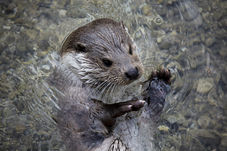Otter Survey
The otter Lutra lutra is a species of water courses and water bodies including streams, rivers, canals, lakes, estuaries and coastal areas. Otters rest in undisturbed areas alongside streams and rivers and breed within structures known as holts, which are often formed within log piles or cavities under tree roots, often along the banks of a river.
The otter is a European Protected Species and is fully protected under the Wildlife and Countryside Act 1981 (as amended). These pieces of legislation make it an offence to kill, injure, capture, or disturb otters, or to damage or destroy the habitats they use for shelter and protection. However, certain actions affecting otters and their habitats may be undertaken under licence from Natural England where it can be demonstrated that the conservation status of otters can be maintained and enhanced through appropriate mitigation and compensation measures.
Otters do not hibernate, they remain active throughout the year and do not have a distinctive breeding season. This means that surveys for otter activity can be undertaken at any time of the year. However, the best time to observe otter footprints and spraints (droppings) is when the bankside vegetation is low and so winter and early spring can often be ideal times for undertaking otter surveys.
Related content
The Windrush Innovation Centre, Howbery Park, Benson Lane, Crowmarsh Gifford, Wallingford, Oxfordshire OX10 8BA
Hexagon Business Centre, Avenue 4, Station Lane, Witney, Oxfordshire OX28 4BN
Tel: 01491 822681
Tel: 01993 220273
Copyright ©2025 Windrush Ecology Ltd.
Email: enquiry@windrushecology.com






